 My Perspectives: English Language Arts
2962141
My Perspectives: English Language Arts
2962141
|
Kelley
Gallagher
|
9780133339574 |
2017 |
|
|
 My Perspectives: English Language Arts, [Grade 10], Volume One
1811528
My Perspectives: English Language Arts, [Grade 10], Volume One
1811528
|
Kelly Gallagher
Elfrieda Hiebert
Ernest Morrell
|
9780133339598 |
2017 |
NIMAC restricted
Contains images
|
|
 My Perspectives: English Language Arts, [Grade 10], Volume Two
1811530
My Perspectives: English Language Arts, [Grade 10], Volume Two
1811530
|
Kelly Gallagher
Elfrieda Hiebert
Ernest Morrell
|
9780133339604 |
2017 |
NIMAC restricted
Contains images
|
|
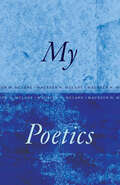 My Poetics
5955618
My Poetics
5955618
|
Maureen N. McLane
|
9780226832647 |
2024 |
Contains images
|
|
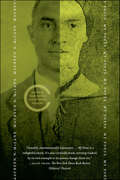 My Poets
6128906
My Poets
6128906
|
Maureen N. McLane
|
9781466875050 |
1983 |
Contains images
|
|
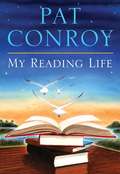 My Reading Life
5920935
My Reading Life
5920935
|
Pat Conroy
|
9780385533843 |
2010 |
Contains images
|
|
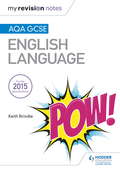 My Revision Notes: Aqa Gcse English Language Revision Book Ebook
4112278
My Revision Notes: Aqa Gcse English Language Revision Book Ebook
4112278
|
Keith Brindle
|
9781471833922 |
2015 |
Contains images
|
|
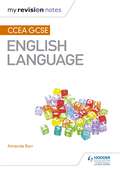 My Revision Notes: CCEA GCSE English Language
5039945
My Revision Notes: CCEA GCSE English Language
5039945
|
Amanda Barr
|
9781471888632 |
2018 |
Contains images
|
|
 My Revision Notes: CCEA GCSE English Language
5042365
My Revision Notes: CCEA GCSE English Language
5042365
|
Amanda Barr
|
9781471888632 |
2018 |
Contains images
|
|
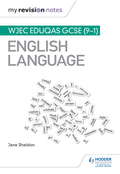 My Revision Notes: WJEC Eduqas GCSE (9-1) English Language
1955101
My Revision Notes: WJEC Eduqas GCSE (9-1) English Language
1955101
|
Jane Sheldon
|
9781510417779 |
2017 |
Contains images
|
|
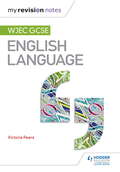 My Revision Notes: WJEC GCSE English Language
4107440
My Revision Notes: WJEC GCSE English Language
4107440
|
Victoria Peers
|
9781471868306 |
2016 |
Contains images
|
|
 My Revision Notes: Wjec Gcse English Language Ebook
4309649
My Revision Notes: Wjec Gcse English Language Ebook
4309649
|
Victoria Peers
|
9781471868306 |
2016 |
Contains images
|
|
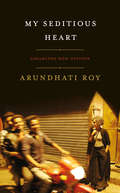 My Seditious Heart
2595179
My Seditious Heart
2595179
|
Arundhati Roy
|
9780735238305 |
2019 |
Contains images
|
|
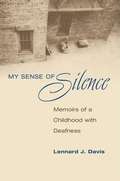 My Sense of Silence: Memoirs of a Childhood with Deafness
1376352
My Sense of Silence: Memoirs of a Childhood with Deafness
1376352
|
Lennard J. Davis
|
9780252090943 |
2000 |
Contains images
|
|
 My Shared Readings [Grade K], [Units] 1, 2
3425697
My Shared Readings [Grade K], [Units] 1, 2
3425697
|
Benchmark Education Company
|
9781512556858 |
2015 |
NIMAC restricted
Contains images
|
|
 My Shared Readings [Grade K], [Units] 5, 6
3425690
My Shared Readings [Grade K], [Units] 5, 6
3425690
|
Benchmark Education Company
|
9781512556872 |
2015 |
NIMAC restricted
Contains images
|
|
 My Shared Readings [Grade K], [Units] 7, 8
3425686
My Shared Readings [Grade K], [Units] 7, 8
3425686
|
Benchmark Education Company
|
9781512556889 |
2015 |
NIMAC restricted
Contains images
|
|
 My Shared Readings [Grade K], [Units] 9, 10
3425685
My Shared Readings [Grade K], [Units] 9, 10
3425685
|
Benchmark Education Company
|
9781512556896 |
2015 |
NIMAC restricted
Contains images
|
|
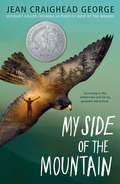 My Side of the Mountain (Lrs Large Print Cornerstone Ser.)
2534879
My Side of the Mountain (Lrs Large Print Cornerstone Ser.)
2534879
|
Jean Craighead George
|
9780593115008 |
1978 |
Contains images
|
|
 My Sidewalks on Reading Street: Smart Solutions
1433794
My Sidewalks on Reading Street: Smart Solutions
1433794
|
Scott Foresman
|
9780328452811 |
2011 |
|
|
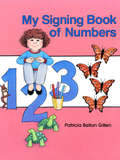 My Signing Book of Numbers
2219382
My Signing Book of Numbers
2219382
|
Patricia Gillen
|
9781563684364 |
1988 |
Contains images
|
|
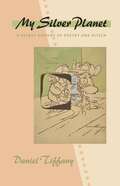 My Silver Planet: A Secret History of Poetry and Kitsch (Hopkins Studies in Modernism)
4285652
My Silver Planet: A Secret History of Poetry and Kitsch (Hopkins Studies in Modernism)
4285652
|
Daniel Tiffany
|
9781421411460 |
2014 |
|
|
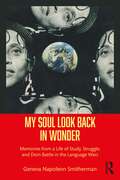 My Soul Look Back in Wonder: Memories from a Life of Study, Struggle, and Doin Battle in the Language Wars
4409976
My Soul Look Back in Wonder: Memories from a Life of Study, Struggle, and Doin Battle in the Language Wars
4409976
|
Geneva Napoleon Smitherman
|
9781000534078 |
2022 |
Contains images
|
|
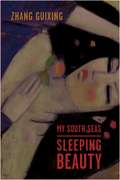 My South Seas Sleeping Beauty: A Tale of Memory and Longing (Modern Chinese Literature from Taiwan)
3512287
My South Seas Sleeping Beauty: A Tale of Memory and Longing (Modern Chinese Literature from Taiwan)
3512287
|
Guixing Zhang
|
9780231511827 |
2007 |
Contains images
|
|
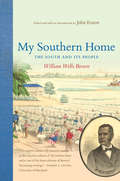 My Southern Home
1167009
My Southern Home
1167009
|
William Wells Brown
|
9780807869352 |
2011 |
Contains images
|
|